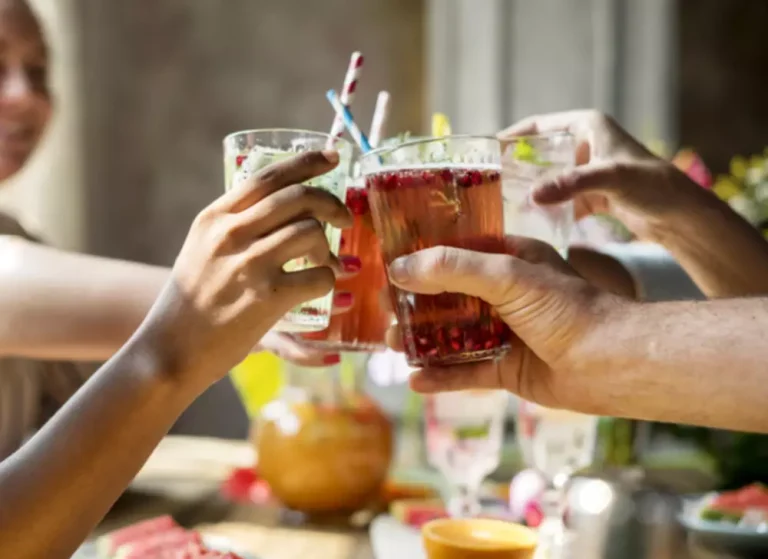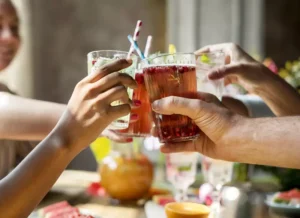
The highest rates of binge drinking are in the European region (24%; 33), particularly in Austria, Cyprus, and Denmark where more than 50% of students report this binge drinking pattern (41). In the US, 4% and 14% of US adolescents aged 14 and 18, respectively, report binge https://ecosoberhouse.com/ drinking in the previous two weeks (42). Similarly in Australia, 2% and 17% of 14 and 17 year olds report binge drinking in the previous week (43). Approximately 13% of adolescents in Africa and 10% of adolescents in South East Asia report past month binge drinking (33).
Harvard Health Publishing

Of note, all of the human longitudinal studies in this review relied on youth self-report of substance use. Some of the existing studies also used ranges for self-report questionnaires, which weakens the ability to understand dose-dependent relationships. Substance use researchers are beginning to incorporate real time measures via smart phone technology, more sophisticated biological markers (i.e., blood, urine, saliva, and hair samples), as well as daily reporting or real-time tracking of drug use through youths’ smart phones and wearable devices (150). These nuanced tools will help improve the accuracy and reliability of reports to better quantify the frequency and amount of alcohol consumed.

Finding Teen Alcohol Treatment
Long-term drinking above the recommended levels may lead to a range of conditions, collectively known as alcohol-related brain injury (ARBI). Symptoms can include learning and memory challenges, and difficulties with balance. From a measurement standpoint, reciprocated nominations may not be a valid measure of reciprocated romantic relationships for our sample. In our question about romantic involvement, we asked about current or most recent partner. If a couple broke up and one person had a subsequent relationship, person A’s most recent partner is not person B’s most recent partner, even if both people agreed that they had previously been in a romantic relationship with each other.
- At baseline all adolescents were no/low alcohol, tobacco, cannabis and other drug use consumers.
- Determining how adolescent alcohol use may lead to overt cognitive and behavioral deficits is critical, and early structural and functional brain changes may help us understand this relationship.
- In that stage, minimizing the risk factors that make a teenager more vulnerable to using alcohol is an issue.
Neurobiological consequences: Integrating findings from human studies
- Considering that it would be highly unethical to randomize youth to different alcohol-using groups, human research is limited to natural observational studies.
- Although binge drinking can have negative health consequences, not all people who binge drink are necessarily addicted to alcohol.
- These programs may advise adolescents to choose romantic partners whose attitudes toward alcohol use align with individuals’ own values, and avoid partners who have more favorable alcohol-related attitudes than their own.
- We asked them about their alcohol use, reasons for drinking, alcohol-related outcomes, health and more.
- In the fourth stage of alcohol and drug use, adolescents have established regular usage, have become preoccupied with getting intoxicated (“high”), and have developed problems in their social, educational, vocational, or family life due to the use of the substance.
- What my parents did do, however, was communicate with me – accept me as my own being with the complexities and strengths and weaknesses that we all share because we are simultaneously dying and living.
“High minimum legal ages are perceived as paternalistic, and they can be seen as hypocritical if the legal age of majority for voting, or the legal age to serve in the military, is 18 or 19.” Given the scientific evidence, should governments set the legal minimum age to 25 or over – once the brain has stopped developing? Experts point out that it’s not that simple, since the public health benefits need to be balanced against people’s perceptions of personal liberty. Most evidence suggests that stricter drinking laws, with an older minimum age for purchase, also encourage more responsible consumption. Consider a study by Alexander Ahammer at the Johannes Kepler University Linz in Austria, where anyone over 16 can legally purchase beer or wine. If stricter laws only increase the desire for booze, then you would expect Austria to have a healthier drinking culture than the US – where the minimum legal drinking age is 21.
Mixing alcohol with other drugs

You and your community can take steps to improve everyone’s health and quality of life. Adolescents tend to drink if the adults around them drink or binge drink alcohol. With that said, some research suggests that people who drink alone as teenagers are likely to develop AUD as adults. AUD is a condition where a person is addicted to alcohol or unable to control their alcohol use. According to the National Institute on Alcohol Abuse and Alcoholism (NIAAA), about 3.4% of US teenagers ages 12 to 17 have AUD. Therefore, it is important toeducate teensnot only about the risks of drinking and driving but also to help themplan for situationsto avoid it.

Therefore, we may not be able to appropriately assess all past reciprocated romantic relationships. Teenage alcoholism is a tragically common problem that results in thousands of deaths every year. The younger a person begins drinking, the more likely they are to be affected by alcoholism later in life. Instead, MacKillop suggests adolescents could be provided with better education about alcohol’s risks, and the ways that it can affect the maturing brain.
- Binge drinking throughout adolescence predicted altered frontostriatal white matter microstructural development when compared to developmental trajectories of non-using healthy adolescents (70).
- It quickly becomes downright terrifying when, in the mix of it all, a child – a tiny being with a soul and real energy, but a lack of the wisdom of age and a lack of a fully developed pre-frontal lobe – starts using controlled substances.
- For adolescents, drinking alcohol can make it even more difficult to control impulses and make healthy choices.
- In Model 4 (the fully specified model), the coefficients for adolescents’ friends’ and partners’ friends’ frequency of drunkenness remained significant; boys and girls were drunk more frequently at waves when their friends and romantic partners’ friends were drunk more frequently.
You can encourage safer drinking behaviour and create a space where the young person feels safe to come to you about any questions. As parents and carers, it’s important to remember that experimentation is normal for young people. The average age of young people trying alcohol for the first time has also risen, from 14.7 years in 2001 to 16.2 years in 2019. The percentage of pure alcohol, expressed here as alcohol by volume (alc/vol), varies within and across beverage types. Although the standard drink amounts are helpful for following health guidelines, they may not reflect customary serving sizes. A large teenage alcoholism cup of beer, an overpoured glass of wine, or a single mixed drink could contain much more alcohol than a standard drink.
Sian Ferguson is a freelance health and cannabis writer based in Cape Town, South Africa. She’s passionate about empowering readers to take care of their mental and physical health through science-based, empathetically delivered information. If you think your teen may not feel comfortable talking with you, perhaps guide them toward another trusted adult, such as an aunt, uncle, family friend, or community leader, with whom they have a good relationship. However, frequent alcohol misuse may eventually lead to AUD, according to the NIAAA. Recognizing AUD in teenagers isn’t always easy, but it can be the first step in offering them the support they need.
